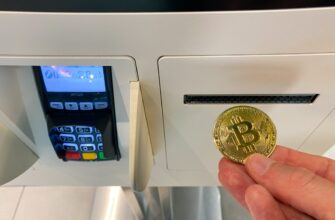## Why Crypto Wallet Encryption Is Non-Negotiable
In the volatile world of cryptocurrency, your wallet’s security is your first line of defense. Encryption transforms your sensitive data into unreadable code, accessible only with your unique key. Without it, hackers can drain your assets in seconds. With crypto thefts exceeding $3.8 billion in 2022 (Chainalysis report), implementing robust encryption isn’t optional—it’s survival.
## Understanding Wallet Encryption: Your Digital Vault
Encryption uses complex algorithms like AES-256 to scramble private keys and seed phrases. Think of it as a virtually unbreakable digital lock. When you encrypt:
– Your data becomes indecipherable without the decryption key
– Unauthorized access is blocked even if your device is compromised
– Transactions require explicit authentication
Hardware wallets (e.g., Ledger, Trezor) encrypt data offline, while software wallets (MetaMask, Exodus) rely on device-level encryption. Both demand rigorous practices to prevent exploits.
## 7 Best Practices for Encrypting Your Crypto Wallet
### 1. Create Uncrackable Passphrases
– Use 12+ characters mixing uppercase, symbols, and numbers
– Avoid dictionary words or personal info (e.g., “Blue42Sky!” not “password123”)
– Generate random phrases via password managers like Bitwarden
### 2. Mandatory Two-Factor Authentication (2FA)
Enable 2FA on all exchange-linked wallets. Opt for:
– Authenticator apps (Google Authenticator)
– Hardware security keys (YubiKey)
– Avoid SMS-based 2FA vulnerable to SIM swaps
### 3. Biometric Backup Where Possible
Leverage fingerprint or facial recognition on mobile wallets for:
– Secondary access control
– Quick revocation if devices are stolen
### 4. Encrypted Backup Protocols
When backing up seed phrases:
– Use metal plates or encrypted USB drives, not cloud storage
– Split phrases using Shamir’s Secret Sharing
– Never store digitally without AES-256 encryption tools like Veracrypt
### 5. Regular Software Updates
Outdated wallets have critical vulnerabilities:
– Enable auto-updates for wallet apps
– Verify update sources to avoid phishing clones
– Patch within 24 hours of security releases
### 6. Air-Gapped Transaction Signing
For hardware wallet users:
– Sign transactions offline
– Use QR codes instead of USB connections
– Prevent exposure to infected computers
### 7. Multi-Signature Wallets for High Values
Require 2-3 approvals for transactions:
– Distribute keys across devices/locations
– Mitigates single-point failure risks
## Step-by-Step Encryption Implementation
Follow this universal process (adjust per wallet interface):
1. **Initialize Wallet**: Install from official sources only
2. **Enable Encryption**: Find “Security Settings” → “Encrypt Wallet”
3. **Set Passphrase**: Input 12+ character password (store offline)
4. **Confirm Encryption**: Complete verification prompts
5. **Test Decryption**: Log out and verify password recovery works
6. **Backup Encrypted Wallet**: Export encrypted file to 2 offline locations
## Beyond Encryption: Layered Security Measures
– **Cold Storage**: Keep 90%+ assets in hardware wallets
– **Decoy Wallets**: Maintain small balances in hot wallets as hacker bait
– **Network Hygiene**: Use VPNs and firewalls during transactions
– **Phishing Defense**: Bookmark legitimate sites; never click email links
## Frequently Asked Questions
### Is wallet encryption enough to protect my crypto?
No. Encryption is foundational but requires pairing with offline backups, 2FA, and phishing awareness for comprehensive security.
### Can encrypted wallets be hacked?
Theoretically possible via brute-force attacks, but AES-256 would take billions of years with current tech. Real risks stem from weak passphrases or physical theft of unencrypted backups.
### How often should I change my encryption password?
Only if compromised. Frequent changes increase forgetfulness risks. Prioritize password strength over rotation.
### Are hardware wallets more secure than encrypted software wallets?
Yes. They keep keys offline in secure elements, immune to malware. Software wallets depend on device security—encryption is crucial but less foolproof.
### What if I lose my encryption password?
Without your password or seed phrase, funds are irrecoverable. This underscores the need for secure, offline backups stored separately from devices.
## Final Thoughts
Encrypting your crypto wallet isn’t a one-time task—it’s an ongoing security discipline. By implementing AES-256 encryption, multi-factor authentication, and air-gapped backups, you create concentric rings of defense around your digital assets. Remember: In blockchain, you are your own bank. Treat wallet security with the rigor of a financial institution, and never let convenience compromise encryption integrity.








